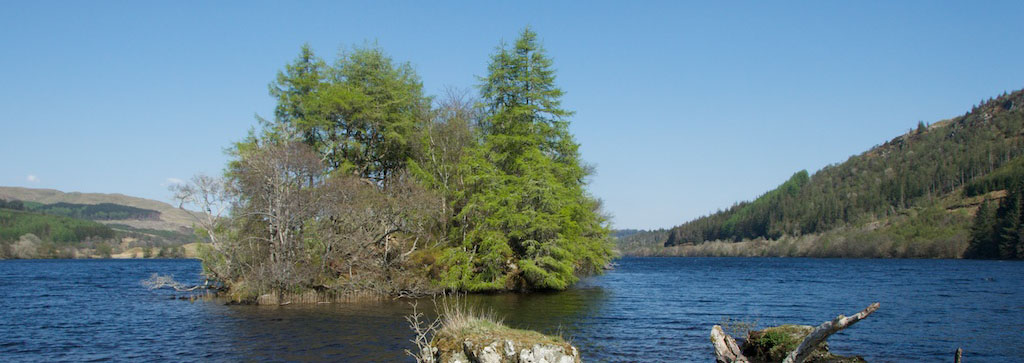
Loch Avich and the Castle of the Red-haired Girl
We were driving along the minor road that winds its way up into the hills above Kilmelford and then drops down towards Dalavich on Loch Awe. Blue sky, warm sunshine, cherry blossom, a cuckoo on a fence, and a couple of hundred potholes in the road. Progress was slow.
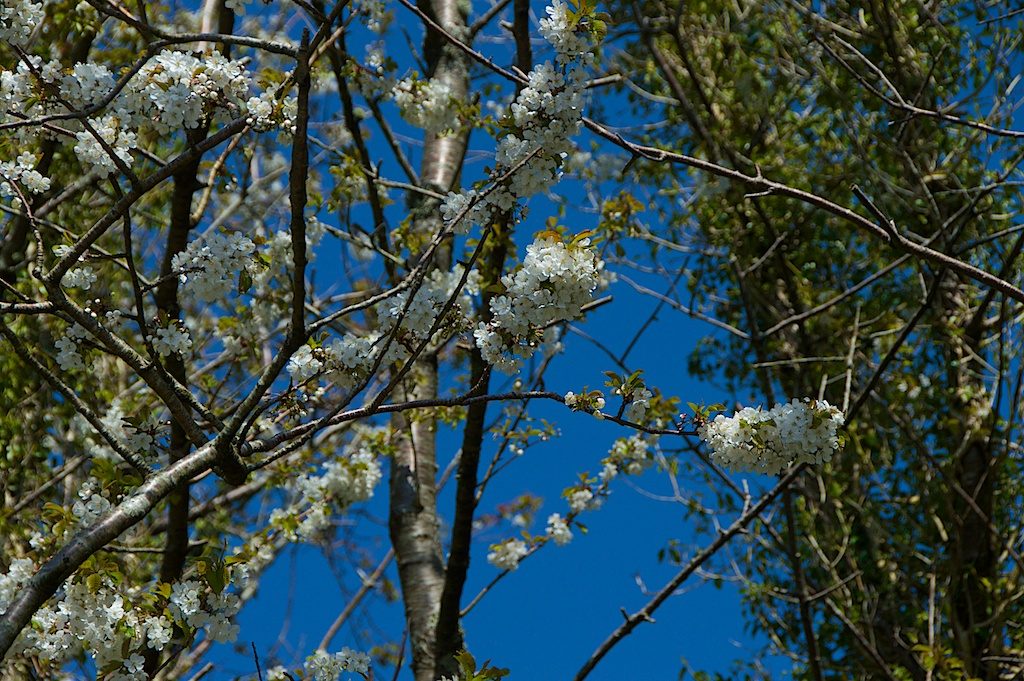
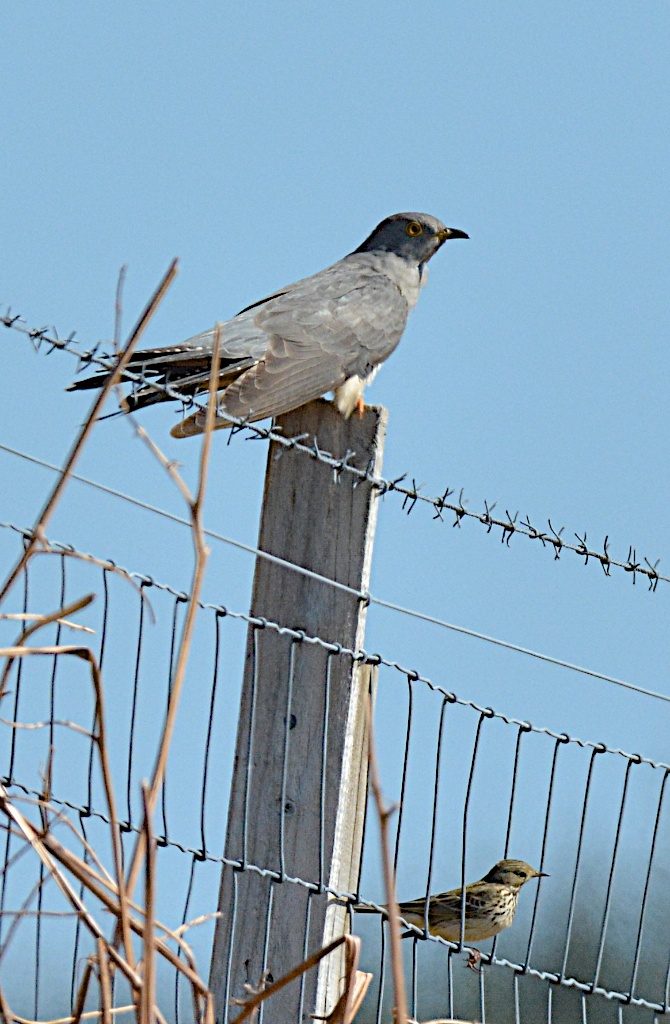
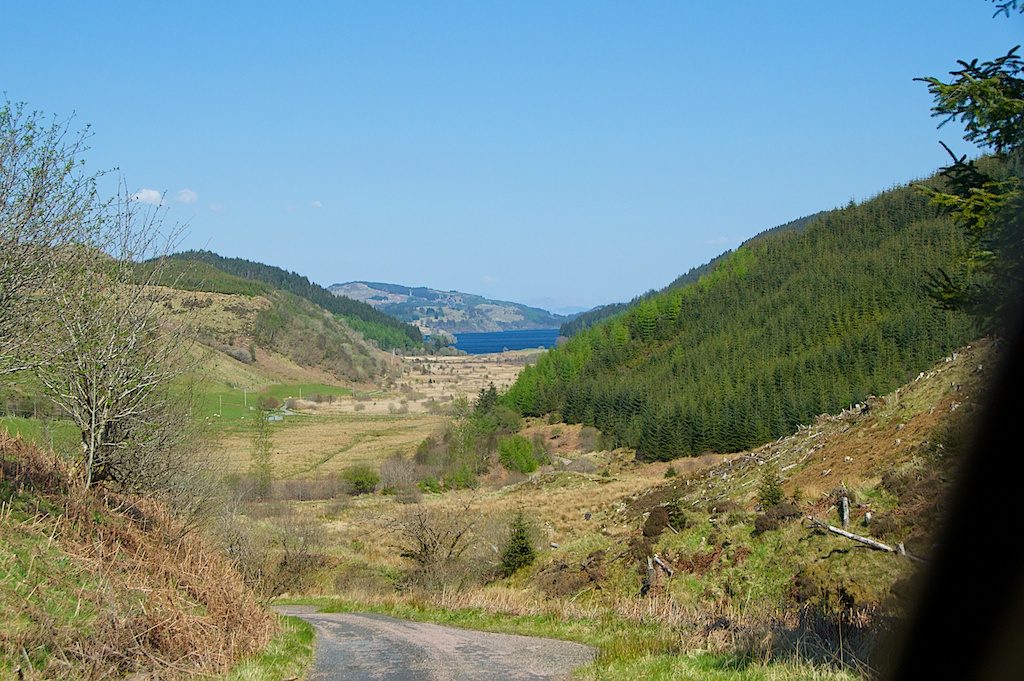
I wanted to take a look at Loch Avich, a five-mile stretch of water that somehow manages to conceal itself from most visitors to Argyll, largely because of its remote position; if you’re a fisherman, however, you probably know it well.
I’d read a lovely old story about a castle, several moons ago, and I couldn’t even tell you now where I first found it. But it was simple and sad, in the way that ancient Scottish stories so often are. On a tiny island in the loch, known as Innis Luana, are the ruins of a castle known as Caisteal na Nighinn Ruaidhe – ‘the castle of the red-haired maid’.
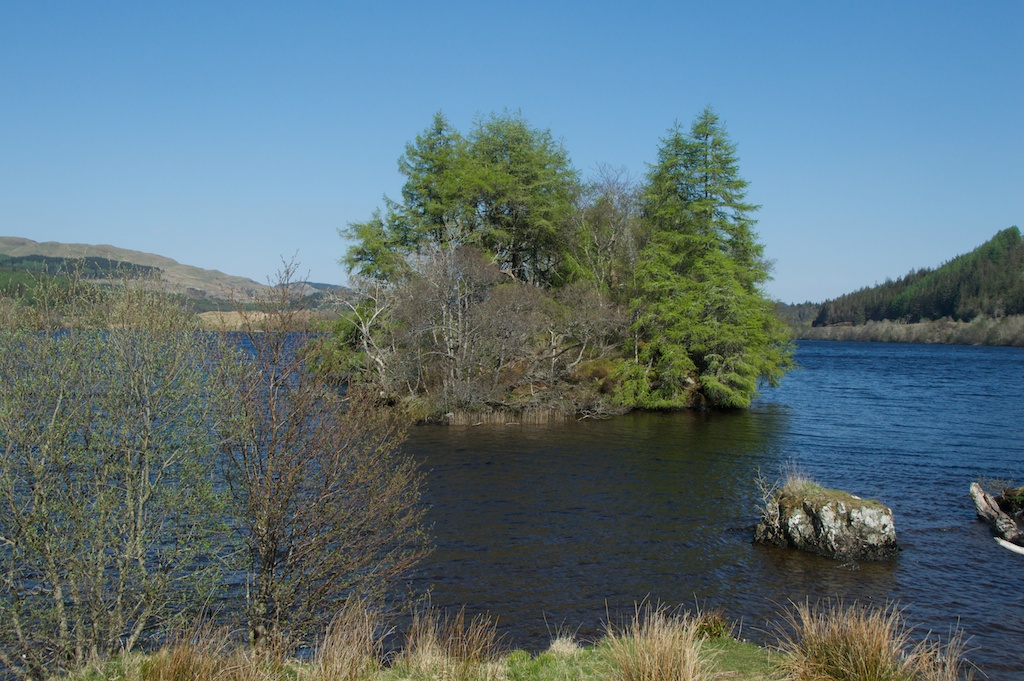 Here is the story, as told in Chambers’ Edinburgh Journal in 1832:
Here is the story, as told in Chambers’ Edinburgh Journal in 1832:
“Such are the tales which used to be related by the Celtic inhabitants of this region, which bounds in legendary stories of the same description. These chroniclers of the origin of Loch Awe say nothing of the tributaries from whence its waters are partly supplied. One of these is a stream flowing from Loch Avich, a small lake in the vicinity, also possessing a certain romantic beauty in its scenery, and enriched in appearance by some beautiful little islands.
On the northern margin of the lake are situated the ruins of a place of strength, receiving a name in Gaelic signifying “the Castle of the Red-haired Maid.” A considerable portion of this edifice is still extant, though of very remote antiquity. The origin of the name is singular, but accords with the barbarous usages of the desultory age in which it took place.
According to tradition, the lord of the castle had a daughter of great beauty; she was of a fair complexion; and her hair consisting of flowing ringlets of a golden hue, she hence received the name of the Red-haired Maiden of Loch Avich. Having once been rescued from a band of freebooters by a neighbouring chieftain, an attachment grew up between her and her deliverer, unknown to her father, with whom the chieftain was at feud.
It seems she was to have been privately married to her gallant preserver, and her father being made aware of the arrangement by an insidious follower, he called her to the top of his castle just at the time she was to have eloped, and sacrificing every thing to his vengeful passion, threw her remorselessly from the battlements. Her lover, who waited for her below, beheld the dreadful catastrophe, and instantly rushed to her father, and stabbed him to the heart. The castle having been afterwards deserted, in time became ruinous; and from its tragical history, it received the name it still bears.”
Chambers’ Edinburgh Journal, Saturday June 2, 1832
We don’t even know the name of the red-haired girl. That’s the thing about history, from this kind of era anyway – it was written largely by men, for whom women were often bargaining tools in the quest for power.
In ‘A History of the Clan Campbell‘, Alastair Campbell lists Caisteal na Nighinn Ruaidhe as one of a handful of fortresses that can be dated back to the earliest of Scotland’s stone castles, built between 1200 and 1250. He reveals that a woodman named John Dewar, who collected tales in the mid-19th century, believed that the castle was built by the MacFiachars, who claimed descent from Niall of the Nine Hostages, an ancient Irish king. But then, at some stage, the castle came to be owned by a family named MacCaurre. Just how this transfer from MacFiachar to MacCaurre came about seems to be a bit of a grey area, and I’m not going to attempt to sort it out. It may even be a mutation of the same name. If anyone can shed any light on it, I’d be glad to hear from you!
The website of the Scottish Castles Association has this to say:
“The Manuscript History of Craignish, compiled about 1700, recounts how Dugal [Campbell of Craignish], in about 1190, ‘married Brihid or Bridget, Daughter to Dugal MacCaurre, Tossach* of Lochavich, by whom he got the Lands commonly call’d the pennies of Lochavich being four in number, or Four merk land, as also the Old Tower and Fortalice in the island of that Loch called Castle Lochavich, but of old Castle nahine ruai (Caisteal na h-Ighinne ruaidh) or the red maid’s Castle, some say so call’d from an Apparition or familiar Brounie that was said to frequent it in that Shape in those Days of Dark Ignorance, but rather as I imagine from the heiress who might have been a red hair’d or a Ruddie complexion’d lass. Of this Dugal I find no more but that he died about the Year 1220, and was succeeded by his son, also Dugal’.”
*A ‘Tossach’ or ‘Toiseach’ was a tribal ruler, an early form of clan chieftain (Dictionary of the Scots Language)
It should be said that the writer of the article from which this extract is taken (Tony Dalton) gives his opinion that the ‘old tower and fortalice’ referred to was not, in fact, Caisteal na Nighinn Ruaidhe but the dun or fortress at nearby Duninveran, as he considers the late 12th century to be too early for the building of the castle; looking at the archaeological remains, and comparing them with similar sites, he proposes that Caisteal na Nighinn Ruaidhe* was built by Sir Colin Campbell shortly after 1316. But this is not to say that there wasn’t an earlier hall-house on the island, whose traces have since disappeared.
*I believe that the name is pronounced roughly ‘castyel na nee-an roy-ah’.
So was the red-haired girl a real person, or an apparition – or did the fate of one lead to the other?
The castle itself…
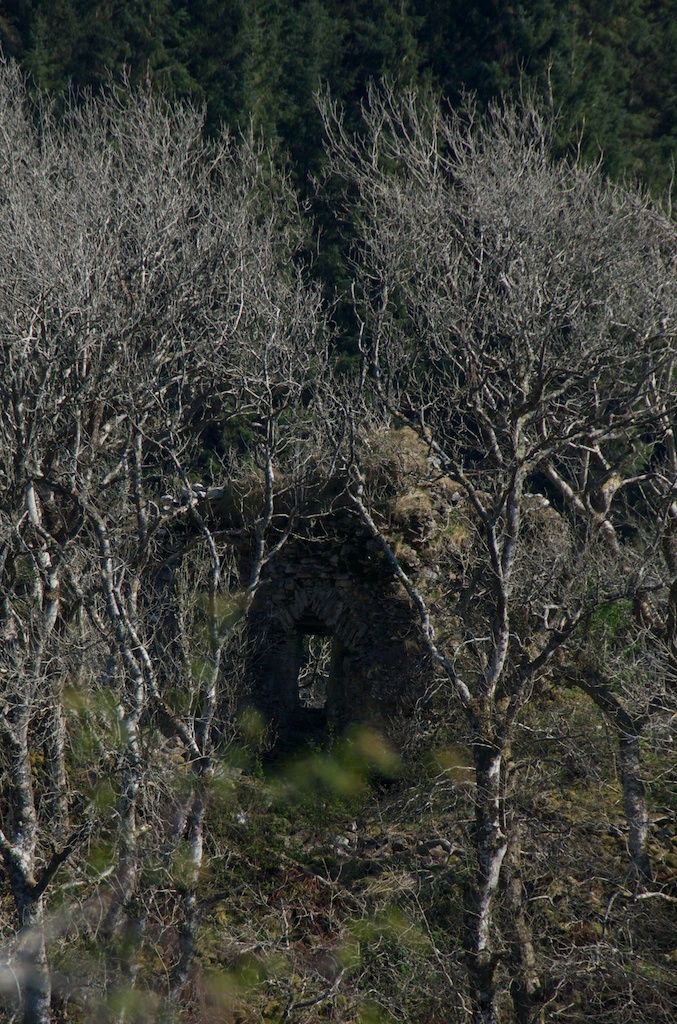 It was originally a three-storey oblong tower house with walls seven feet thick, surrounded by a defensive wall with a small outbuilding. Most of it has now fallen to rubble, apart from the south wall of the tower house. Viewed from the shore, it’s almost completely obscured by trees, but through the branches an arch and a window can just be seen.
It was originally a three-storey oblong tower house with walls seven feet thick, surrounded by a defensive wall with a small outbuilding. Most of it has now fallen to rubble, apart from the south wall of the tower house. Viewed from the shore, it’s almost completely obscured by trees, but through the branches an arch and a window can just be seen.
The great hall, which had a large fireplace, would have been at first floor level; and on the second floor were two apartments with south-facing windows and latrine chutes. No staircases survive. The upper floors would have been built of timber and the roof was probably thatched. (Details from The Scottish Castles Association and RCAHMS)
Back to Mr Campbell again, who says that Dugal MacCaurre’s son, also Dugal or Dougall, married “a daughter of MacSween of Skipness, son of Sween the Red who built Castle Sween”. So it sounds as if we have some red-haired genes, at any rate. But we still don’t really know when the castle actually got its name. And the red-haired maid is still anonymous.
Then I find that this little island is mentioned in an Ossianic poem, which was translated by John Smith of Campbeltown in ‘Galic Antiquities: Consisting of a History of the Druids, particularly of those of Caledonia’, published in 1780.
On the first page of ‘Cathluina: A Poem’ he adds a note to the effect that: “In the district of Lorn in Argyle-shire, there is a lake which is now called Loch-avich, but anciently Loch-luina, or Lochluana. Near it was probably the scene of this poem.”
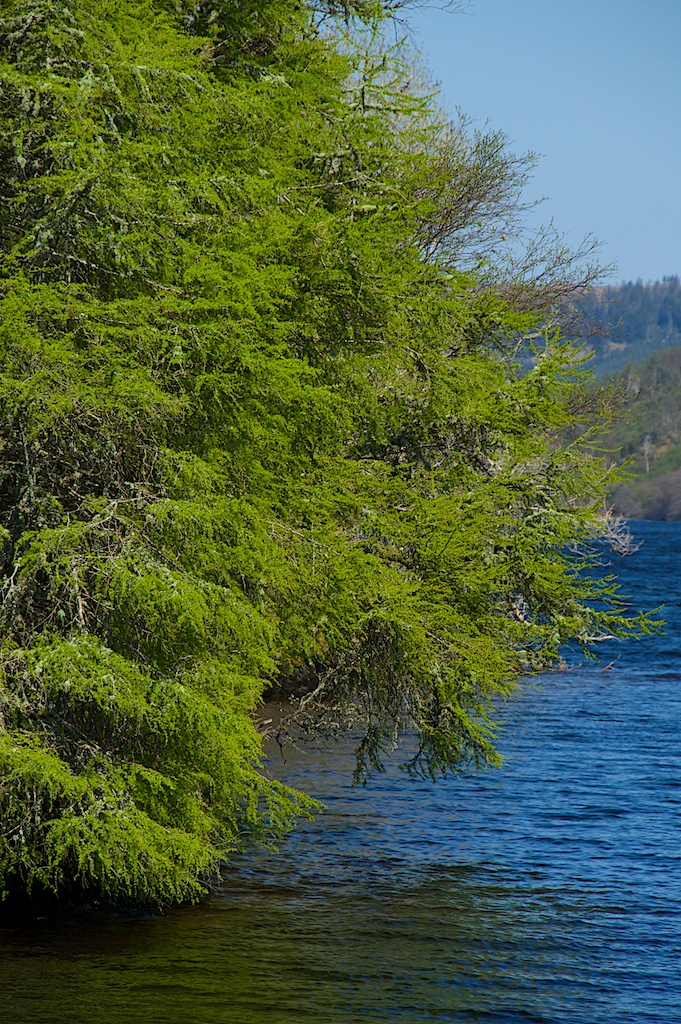 The poem tells of how two famous warriors, Gaul and Garno, came to the “hall of the chief, where it lifts its gray head, in the midst of trees, in the green isle of Innisluina.” The chief was named Moran, and he had a beautiful daughter called Annir. As Annir played the harp to entertain the guests, both Gaul and Garno fell in love with her. “Their souls melted at the song, like a wreath of snow before the eye of the sun.” The friends were now rivals; and, unfortunately for Garno, it was Gaul whom Annir favoured. She “turned her eye from the brow of Garno; for she often saw the fire of his wrath arise, like a dark flame when clouds of smoke surround it.”
The poem tells of how two famous warriors, Gaul and Garno, came to the “hall of the chief, where it lifts its gray head, in the midst of trees, in the green isle of Innisluina.” The chief was named Moran, and he had a beautiful daughter called Annir. As Annir played the harp to entertain the guests, both Gaul and Garno fell in love with her. “Their souls melted at the song, like a wreath of snow before the eye of the sun.” The friends were now rivals; and, unfortunately for Garno, it was Gaul whom Annir favoured. She “turned her eye from the brow of Garno; for she often saw the fire of his wrath arise, like a dark flame when clouds of smoke surround it.”
For three days the heroes feasted at Innisluina as the honoured guests of Moran; and on the fourth day they went hunting. Annir followed them, possibly to admire Gaul’s skill in the chase, but she was haunted by fear and wished that Garno would leave the land.
That same day, an unknown youth appeared separately to both Garno and Gaul as they sat resting in the sun with their hunting dogs at their feet. Garno was the first to receive a visit. The youth told him that he was sent by the mighty Duaran, chief of the halls of Comara. His message was this: that Duaran himself loved Annir and intended to marry her; and anyone who defied him would feel the strength of his arm in battle. Duaran, the youth assured Garno, was a formidable foe, “his strength as the thunder that rolls thro’ heaven; and his sword as the lightning that blasts the affrighted groves.”
Garno was having none of that. “Tell that proud son of the sea,” he said, “that Garno will never yield. My arm is strong as the oak of Malla, and my steel knows the road through the breast of heroes. To Gaul alone, of all the youths on the hill, I yield the right-hand in battle, since he slew the boar that broke my spear on Elda.”
The dispute can only be settled by combat, and the duel must take place that night. Despite all the sabre-rattling, there is a sense that Garno knows what is coming. He bids his servant fetch his sword, his shield and his spear; but then, as if with second sight, he has a premonition of doom:
“What mean these two angry ghosts that fight in air! – The thin blood runs down their robes of mist; and their half-formed swords, like faint meteors, fall on sky-blue shields. Now they embrace like friends. The sweeping blast passes through their airy limbs. They vanish. I do not love the sign; but I do not fear it.”
Annir, who has been secretly watching the confrontation all the time, quietly withdraws in despair. But she has heard Garno say that he would yield to no one but Gaul; and it is to Gaul’s side that she then hastens her steps.
Gaul is resting on his own hillside, next to a freshly-killed ‘branchy deer’ with his panting dogs all around. He is satisfied with the day’s work, and his thoughts turn to the lovely Annir:
“Fair is my love as the bow of heaven: her robe is like the beam of the morning. Mild is the blushing of thy face, O Annir, as that sun, when he looks through the red-tinged clouds of the west, and the green tops of the mountains smile. O that I saw thee on the hill of deer, in all thy beauty; that I saw thee like the young pine in the vale of Luina, when it softly waves its head in the gale, and its glittering leaves grow in the shower of the sun! Then would my soul rejoice as the roe, when he bounds over the heath in his speed; for lovely art thou in the eye of Gaul, thou daughter of car-borne* Moran!”
*car-borne = chariot-borne
Gaul’s reflections are interrupted by the arrival of a stranger – the same youth who had appeared to Garno. The visitor gets straight to the point: “Thy Annir may be lovely, son of Ardan; but dire is the battle thou must fight. Duaran loves the maid: on that hill he awaits thy coming. Yield, Gaul, thy love to Duaran.”
Gaul tries to reason with him:
“My love I will yield to no one. But tell thou that chief to come to the feast to-night. To-morrow he shall carry away the gift of a friend, or feel the strength of a foe.”
The youth’s reply is enough to send shivers down your spine, even now.
“Thou mayst spread the feast but thou must eat it alone, for Duaran comes only to lift the spear. Already I see his distant steps. He stalks like a ghost on that dusky heath. The beam of his steel supplies the departing light; and the clouds brighten their dark-brown sides around him. Hark! he strikes his shield. Its sound is the death of heroes.”
Trying to appear unperturbed, Gaul gathers his own weapons and hums a careless tune. But he clothes himself with his arms “like a ghost that clothes his dark limbs with meteors of light, when the mountain-heads are shaking in thunder.” From the shadows Annir watches, unseen.
Accordingly, when darkness fell, Garno and Gaul went to the appointed hillside; each, unknown to the other, was expecting to fight Duaran to the death, “for night was dark on the hills, and this oak concealed the sky.” They engaged in battle, unaware that friend was fighting friend.
“Dreadful was the wrath of the heroes; dreadful was the echo of their swords, as they mixed on high, like streams of lightning… Luina trembles, with all its woods… Rocks with their earth and moss fly from their heels. Blood, mixt with sweat, descends in streams to the ground. It wanders through the green grass, and dyes the passing rill.”
The duel lasted all night, but in the light of sunrise, as Gaul and Garno lay dying of their wounds, each finally recognised the other. The last words they exchanged were of deepest sorrow. Annir was the first to discover their bodies, and she sank to her knees beside Gaul with a cry of unbearable grief. She would not be parted from her love; and the next day she, too, lay dead.
“Death came, like the calm cloud of sleep, when the hunter is tired upon his hill, and the silence of mist, without any wind, is around him.”
For two days afterwards Annir’s father, Moran, grieved within his castle walls, and then he asked for his staff and left his fortress forever.
With the walls of Innis Luana standing deathly silent, it is the poem itself that sings the story of eternal life:
“O Garno, warrior bold! Gaul, thou lovely hero! and Annir, fair and unhappy! —Whether you ride on the silent clouds, or turn the course of the tempest; whether you rest in the peaceful halls of your fathers; visit the cloud-robed hills of Morven, or haunt the green groves of Luina: —O let your love, your grief, and your wounds, be forgot; and listen with joy to your fame in the song. —While harps remain, they will repeat your name; and the last voice of bards shall praise you.”
Quotes from: ‘Galic Antiquities: Consisting of a History of the Druids, particularly of those of Caledonia’ by John Smith (1780)
Hazel trees grow on the shore of Loch Avich, and beneath them a patch of wood anemones had opened wide in the afternoon sun. These flowers are usually pure white, but curiously a couple of them were flushed with pink. A lovely echo, perhaps, of the blood of the two heroes staining the waters of the ‘passing rill’.
And meanwhile the Castle of the Red-haired Girl remains largely hidden from prying eyes, and even if we’d bought a fishing licence and hired a boat I’m not entirely sure I would have gone and trampled all over the memories. Some places seem to exist only partly in this world, and they are best left to their own dreams.
A note about the Ossianic poems: In the mid and late 1700s a writer from Inverness named James Macpherson published a wealth of poetry which he said he’d translated from the works of a third-century bard named Ossian, who is a figure in Irish legend. Macpherson claimed that the original verses had been collected from people he’d met during his travels in the Highlands. Some contemporary historians were immediately suspicious, seeing anachronisms in the language, and today the general opinion seems to be that the works were largely the product of Macpherson’s fertile imagination. They are strangely spellbinding, though, drawing you in like the tales in the Mabinogion, with their characters that look human but can harness the wind and split rocks to make thunder. And, like the legends of Arthur and so many others, they have underlying morals that would have spoken clearly to medieval ears, had they chanced to hear them.
The collection of works I have quoted from was compiled by John Smith, a minister at Campbeltown; his offering is described by one source as ‘a powerful auxiliary to the cause of Macpherson’. It was obviously in the same tradition. Maybe we’ll never know their real provenance.
For myself, I must say that I love these old texts, because I don’t mind following strands of thought, even if they lead you all around the hills. I love the halls and hunting dogs and the ‘branchy deer’. There’s a peculiar joy in the telling that lingers over every detail and strays all over the place before it gets to the point, because story-telling was such an old and important tradition, and some tales took several days to tell. And most of all, I am grateful to John Smith for giving me a name for the red-haired girl.
Sources:
- RCAHMS Canmore
- Ground plan of ruins (Canmore)
- Scottish Castles Association
- Chambers’ Edinburgh Journal, 1832
- ‘A History of the Clan Campbell‘ by Alastair Campbell (pub. Polygon, 2000)
- ‘Galic Antiquities: Consisting of a History of the Druids, particularly of those of Caledonia’ by John Smith (1780)
Photos copyright © Jo & Colin Woolf
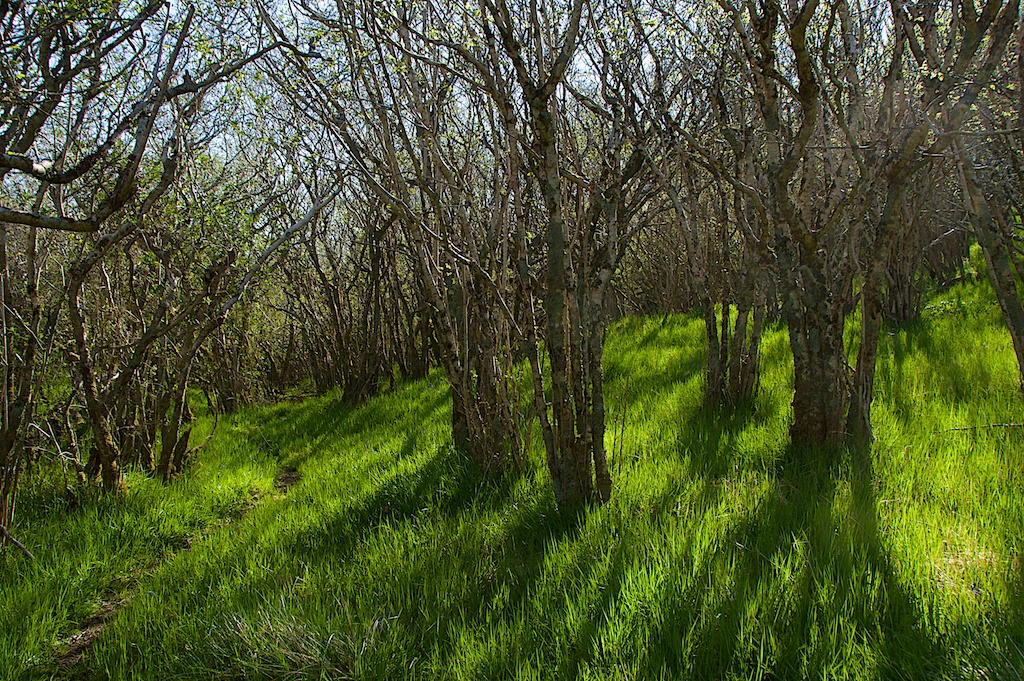

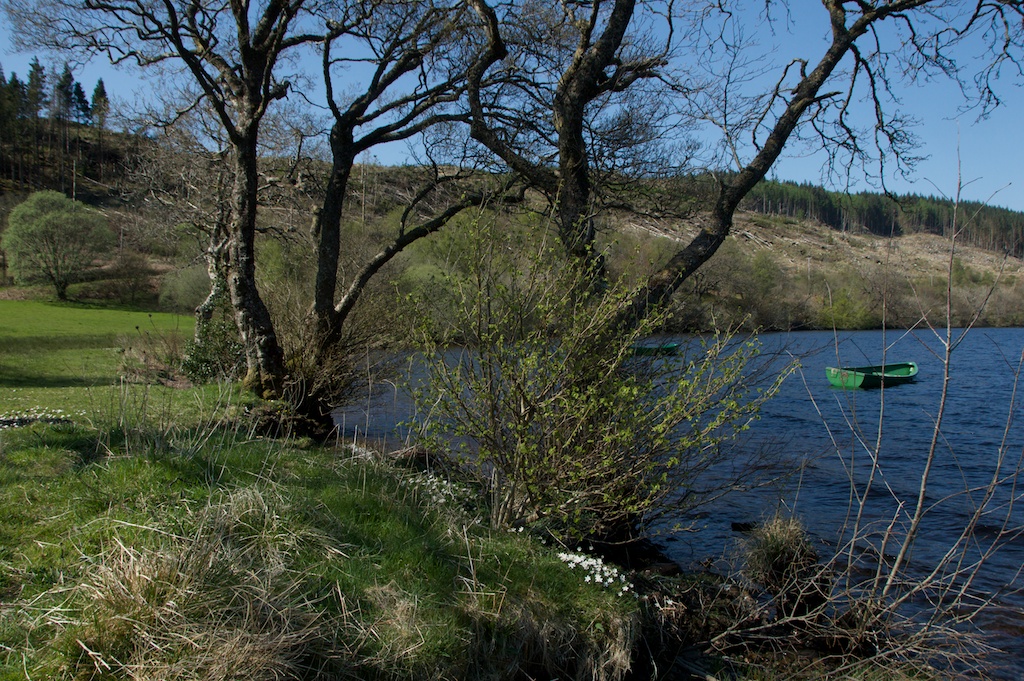
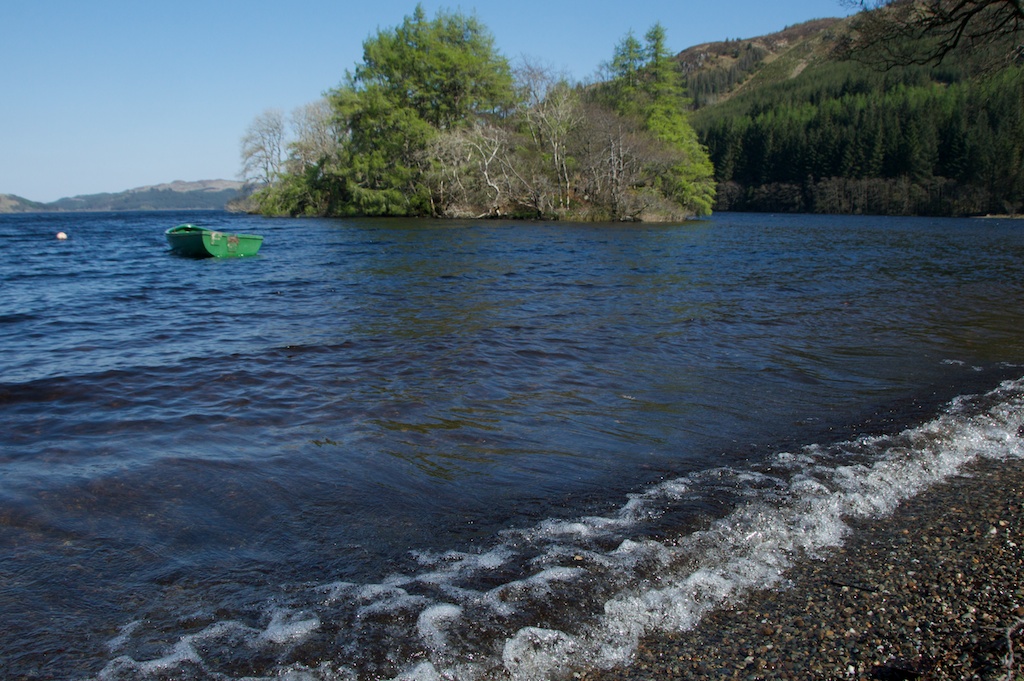
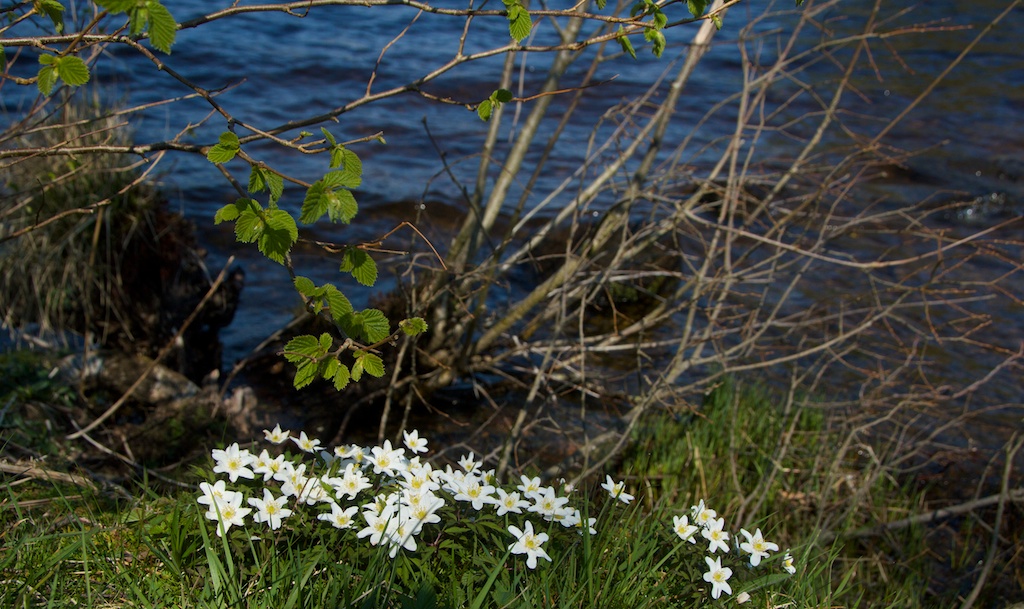
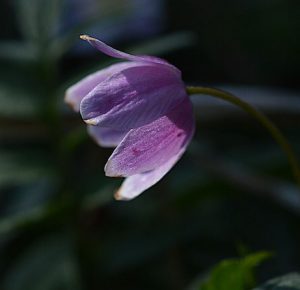
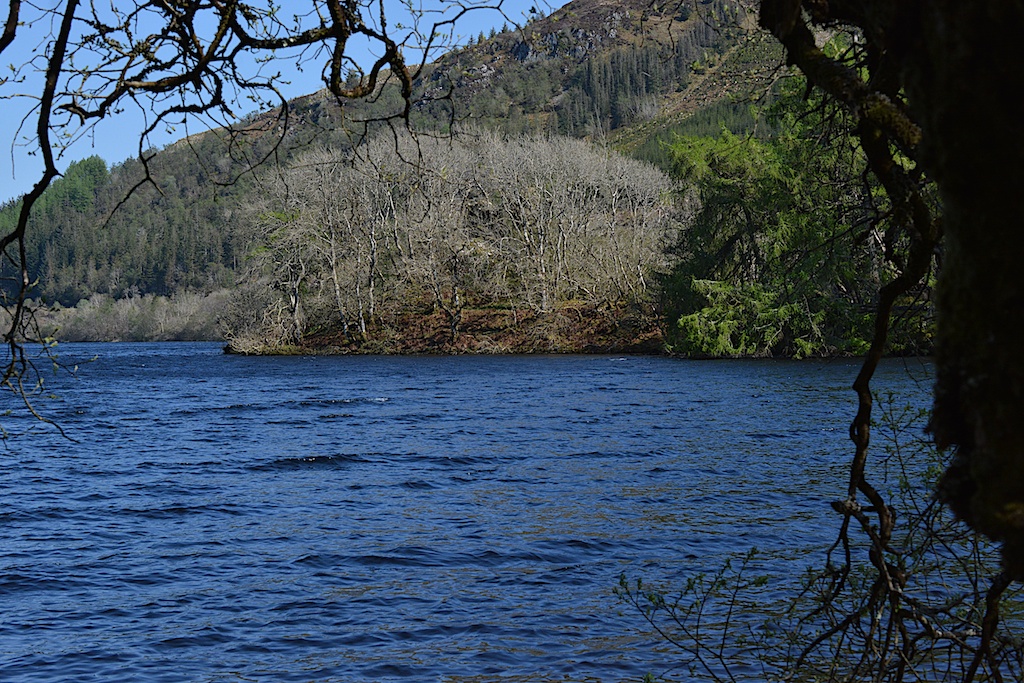
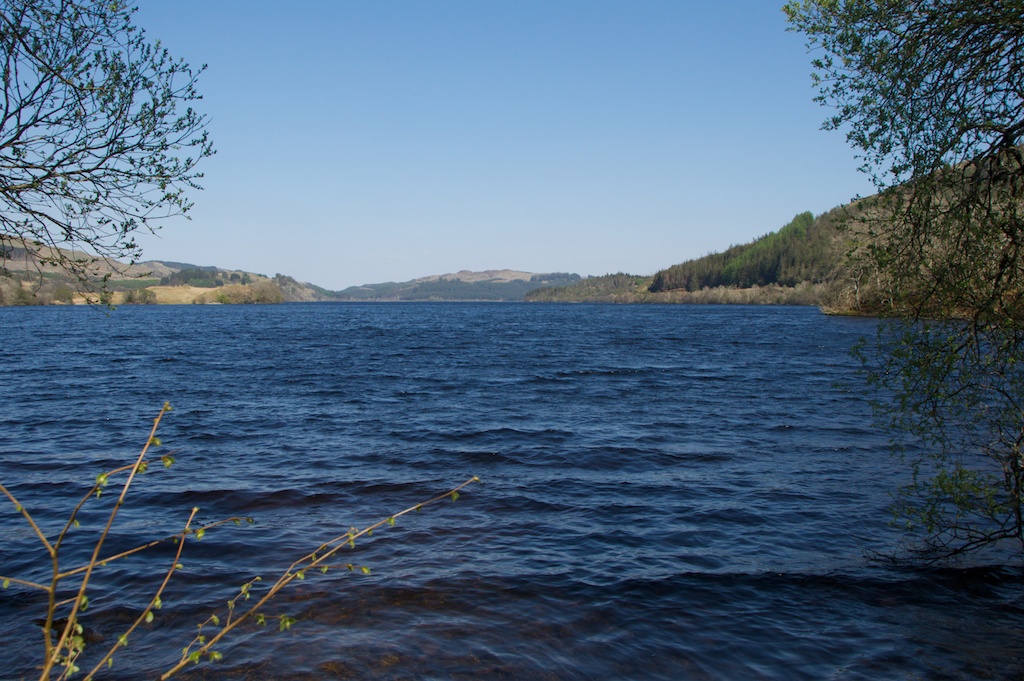
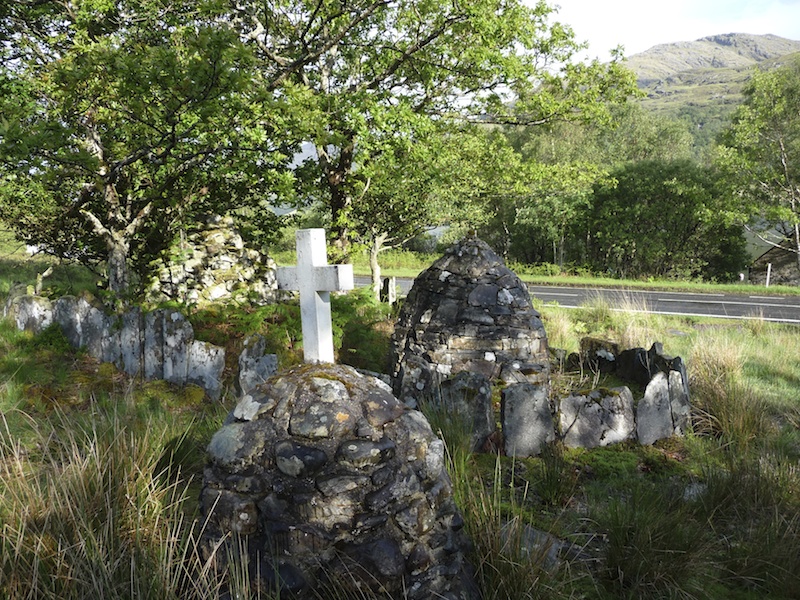
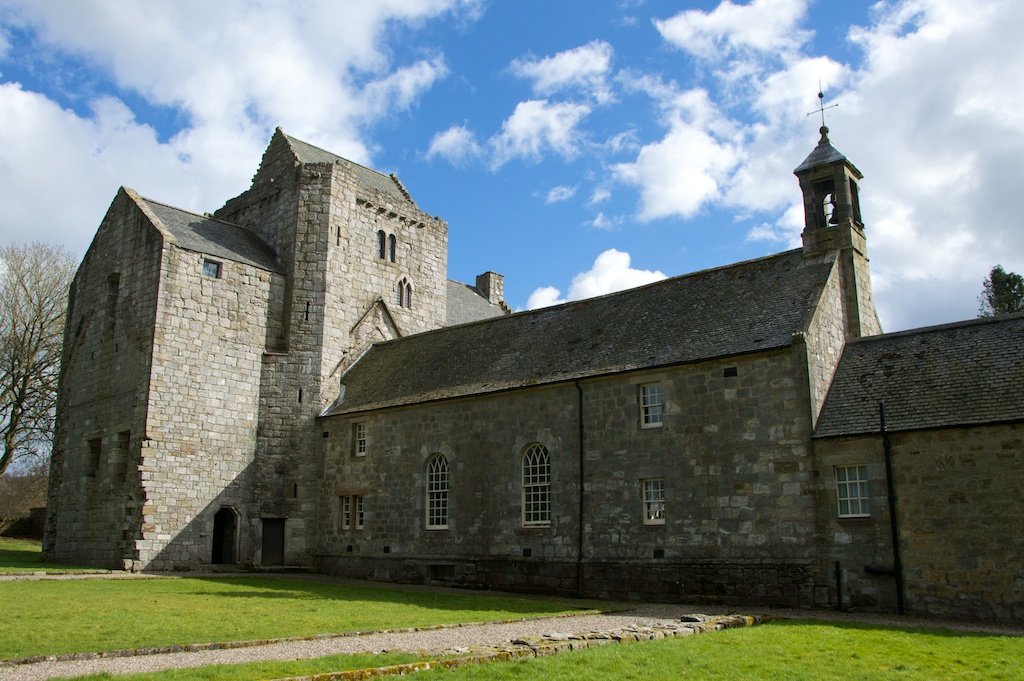
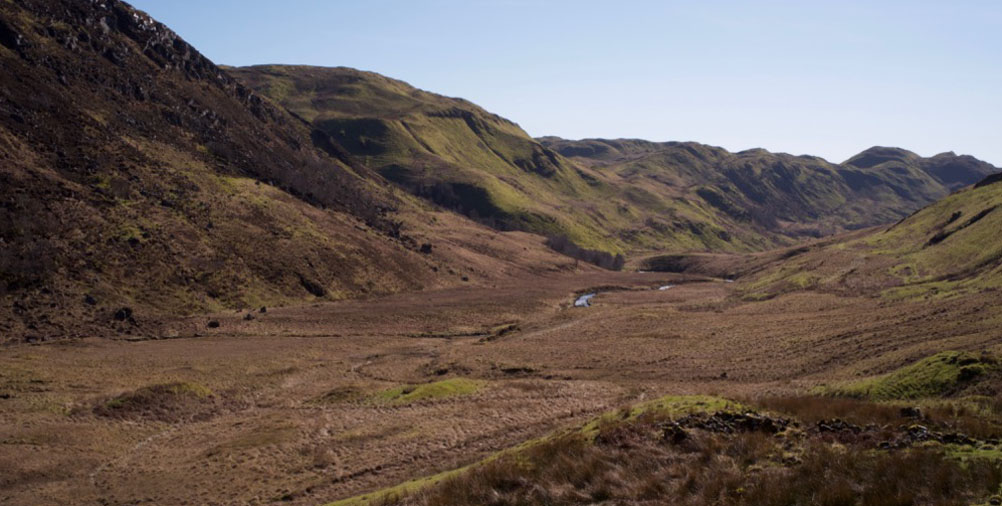
18 Comments
winderjssc
As always, impeccably researched and beautifully described and illustrated.
Jo Woolf
Thank you, Jessica! 🙂 I loved writing about this place.
Jerry and Kathleen Sand
Soooo, tantalizing. I do remember your earlier posts about the Castle of the Red-Haired Girl. We’ve wandered Loch Awe a bit and now have resolved to return.
Jo Woolf
It’s all so beautiful around there – you could spend weeks just exploring Loch Awe and its scattering of little islands. Thank you, Jerry and Kathleen! 🙂
bdean50
I saved this until I would have time to savor it. Well done, and thank you. But oh, I was so wanting to go through that door!!
Jo Woolf
Aahh, yes! So alluring! But would you ever return?! 🙂 Thank you very much – really kind!
blosslyn
Would make a wonderful opera and we spent at least 3 days travelling around that beautiful area, wonderful weather 🙂
Jo Woolf
Yes, I guess it would, Lynne! I’m not going to be writing that, though! 🙂 Glad to hear you had such fab weather.
blosslyn
Oh thats a shame, will just have to do with your written words then 🙂
Jo Woolf
😀 I think you will! It’s a blessing, really!
blosslyn
Ha ha 🙂
Lone Wolf Breathes
This is an enthralling blog, so much research and excellent pictures make it come alive in my mind. Following you for more Scottish castle history. Stephen
Jo Woolf
Thank you Stephen, that’s very kind of you to say so! You’ll find plenty of lovely Scottish castles here! Always a pleasure to share them. 🙂
David Wood
In 2016 we were fishing Loch Avich. My colleague was convinced he heard a banshee-like wailing sound. He doesn’t want to go back there … but at least he’s still alive. Neither of us knew the story of the red-haired maiden at the time.
Jo Woolf
Oh my goodness!! That sounds very weird! I can well imagine how it spooked him. What can I say… the story is there… I’ve always felt there’s an atmosphere about the place, so I’m fascinated to know this! Thanks for telling me about it.
Tony Cook
For the record. I was the fisherman referred to who was reluctant to return to Loch Avich for reason of having encountered the banshee.
There were two of us in a boat that day The weather was fine, the scenery wonderful. We caught very little, nor apparently did the only others we met –a couple in a double kayak.
At about mid afternoon a strange sound began and lasted about 3 minutes. I can only describe it as similar to wind in telephone wires–fairly distant, high pitched and from no apparent direction.Similar to faint wailing. We were puzzled but not alarmed and continued to catch nothing.
On recounting this to our other holiday companions, it was jokingly suggested that we might have heard the banshee–one of the group is Irish
This year responses were requested to the suggestion that the fishing group return to Argyle and my reluctance to go back to Loch Avich was entirely in jest. I would hate to dissuade folk from visiting the Loch in that beautiful part of Scotland.
Having said that, I cannot think of an explanation for our experience, There was neither wind nor telephone wires. Until recently I was unaware of the local legend and for the record neither the lady who hired us the boat,nor the one in the kayak had red hair
.TC.
Jo Woolf
Hi Tony, thank you for describing your experience! That is so interesting! I have heard similar sounds in trees, but only in high wind – I can see why your Irish friends thought it must be a banshee. Who knows? I think these experiences are purely personal, and I can imagine how you felt when you found out about the story! I shall certainly be interested to go back there myself now, and I’ll report on any unusual phenomena! I’m pretty sure your experience won’t discourage people. I would love to know if anyone else experiences anything, though!
Tony Dalton
Hi Jo
Unsure if my previous comment went. Good site thanks, found purely by chance. I live in Lochavich and if you email me I’ll forward more information on the castle.
Tony